Add-Ons
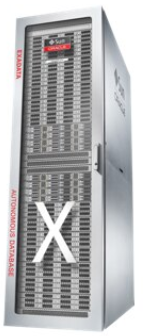
The old quandary of build versus buy is falling away as companies realize they don’t have time to assemble, test, and tune disparate pieces anymore. And they’re getting tired of the cost and complexity of integrating IT components themselves. That’s why the IT industry is graduating from an environment where customers need to integrate virtualization, networking, and cloud on their own, to one in which everything is included in a single, new-generation system. That’s true whether the IT is in their data centers or in the cloud.
Oracle engineered systems take infrastructure optimization to the next level. They’re architected, integrated, tested, and optimized to work together. What’s more, they’re coengineered with Oracle software for a level of cloud-ready integration and Oracle Database performance that generic systems cannot match.
Cloud-Ready: Take a clear path to cloud.
All Oracle engineered systems consumption models are cloud-ready when you are. Choose traditional on-premises deployment, private cloud, or public cloud behind your firewall—and get the same set of world-class, fully compatible, cloud-ready capabilities.
Power: Do more with less.
Deliver optimum levels of performance, availability, and security. Build on Oracle engineered systems and do it faster, simpler, and cheaper than with generic systems.
Value: Cut costs from day one.
Control software licensing costs by using fewer database cores to get more work done. Deploying a single-vendor model means you’ll spend less time on IT operations from day one, and more time creating new value for your organization.
Confidence: Relish a no-fear future.
You can deploy Oracle engineered systems with confidence, knowing that the world’s largest organizations trust Oracle to optimize and protect their most critical databases and applications. And, as your operational requirements change, Oracle engineered systems can easily integrate cloud capabilities when you need them.
Read more about Oracle Engineered Systems using the links indicated below.
| Big Data Appliance | · Oracle Big Data Appliance |
| Database Appliance | · Oracle Database Appliance X8-2-HA |
| Exadata Database Machine | · Exadata On Premises |
| Private Cloud Appliance
|
· Oracle Private Cloud at Customer |
| Zero Data Loss Recovery Appliance | · Zero Data Loss Recovery Appliance X8M |
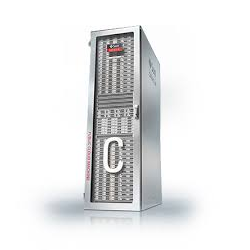
If you can’t move your data or applications to the public cloud, for privacy or data governance reasons, Oracle provide the public cloud behind your firewall with Oracle Cloud at Customer. You stay in control of your data while Oracle delivers and manages the services based on how you want to operate.
Use Oracle Cloud services for everything from data management and analytics to adopting or extending a complete software-as-a-service portfolio (SaaS). Achieve faster time to value; control over regulatory issues, data privacy, and governance; tight integration with your network security; and low latency for on-premises applications and data.
Oracle Cloud at Customer includes all operational management in the standard offering to simplify deployment. Furthermore, the ability to move workloads back and forth between cloud and on-premises is a big differentiator, and a proof point for the capabilities that the Oracle integrated technology stack delivers.
Oracle Cloud at Customer offerings include:
- Oracle Cloud At Customer
- Oracle Exadata Cloud At Customer
- Oracle Private Cloud At CUstomer
- Oracle Big Data Cloud At Customer
Cloud At Customer is a mixed workload platform. You can run a variety of Oracle Cloud services in your Oracle Cloud at Customer environment. For example both Oracle Cloud Infrastructure services that Platform Cloud Services.
For a complete list of services please refer to the following LINK
For a complete description of features and functionality for Cloud At Customer please refer to the following LINK
Exadata Cloud At Customer
Exadata Cloud at Customer enables you to apply the combined power of Exadata and Oracle Cloud Infrastructure inside your own data center. You have full access to the features and capabilities of Oracle Database along with the intelligent performance and scalability of Exadata, but with Oracle owning and managing the Exadata infrastructure. You can use the Oracle Cloud Infrastructure console and APIs to manage Exadata Cloud at Customer like any other cloud resource, while maintaining absolute sovereignty over your data.
For a complete description of Oracle Exadata Cloud At Customer Generation 2 refer to the following LINK
Oracle Private Cloud at Customer
Oracle Private Cloud at Customer enables customers to run both Oracle and non-Oracle applications on a platform located inside their data centers, while the infrastructure is managed by Oracle cloud experts. Oracle Private Cloud at Customer systems are preconfigured according to best practices, which have been proved by many mission-critical Oracle Private Cloud Appliance installations around the world.
Oracle Private Cloud at Customer is designed for rapid and simple deployment of mission-critical applications and workloads, whether running on Linux, Oracle Solaris, or Microsoft Windows. High-performance, low-latency physical network connectivity and Oracle Software Defined Networking (SDN) technologies facilitate automated provisioning of the server and storage networks. Leveraging the software-defined network fabric, customers can dynamically configure networks without having to manually re-cable connections, saving time and reducing the risk of human error. The consolidation of network connections results in up to 70 percent fewer cables and cards.
For a complete description of features and functionalities of Oracle Private Cloud At Customer refer to the following LINK
Big Data Cloud At Customer
Oracle Big Data Cloud Service is offered on Oracle Cloud, using state-of-the-art Oracle-managed data centers. You can also choose Oracle Big Data Cloud at Customer, which provides Oracle Big Data Cloud Service hosted in your data center.
An entitlement to Oracle Big Data Cloud Service gives you access to the resources of a preconfigured Oracle Big Data environment, including a complete installation of the Cloudera Distribution Including Apache Hadoop (CDH) and Apache Spark. Use Oracle Big Data Cloud Service to capture and analyze the massive volumes of data generated by social media feeds, e-mail, web logs, photographs, smart meters, sensors, and similar devices.
For a complete description of services and functionalities of the service please refer to the following LINK

Oracle Cloud Security: A reason To move to the Cloud
Top concerns for cloud adoption are related to security. Oracle’s security solutions enable organizations to implement and manage consistent security policies across the hybrid data center. Oracle security cloud services make leading security technologies available everywhere to organizations large and small.
The IT security practices of many organizations that manage their own systems may not be strong enough to resist complex threats from malware, phishing schemes, and advanced persistent threats unleashed by malicious users, cybercriminal organizations, and state actors. The perimeter-based security controls typically implemented by organizations who manage their own security—from firewalls, intrusion detection systems, and antivirus software packages—are arguably no longer sufficient to prevent these threats.
Oracle Cloud is built around multiple layers of security and multiple levels of defense throughout the technology stack. Redundant controls provide exceptional resiliency, so if vulnerability is discovered and exploited in one layer, the unauthorized user will be confronted with another security control in the next layer. But having some of the world’s best security technology is only part of the story. Oracle aligns people, processes, and technology to offer an integrated defense-in-depth platform:
- Preventive controls designed to mitigate unauthorized access to sensitive systems and data
- Detective controls designed to reveal unauthorized system and data changes through auditing, monitoring, and reporting
- Administrative measures to address security policies, practices, and procedures
Oracle offers a variety of options to implement preventive security controls for data at rest and in transit for different cloud services, including encryption by default as part of Oracle Database Cloud Service, redaction of sensitive application-layer data, restriction of privileged-user capabilities, subsetting or masking of data in nonproduction environments, and monitoring of user activities.
For a complete list of Oracle Security Features and Compliance please refer to the following LINK
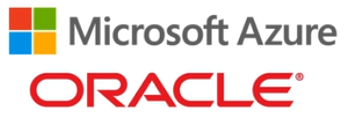
Oracle and Microsoft Accelerate Enterprise Cloud Adoption
This cloud interoperability partnership combines Oracle and Microsoft technologies to support both line of business and mission-critical applications. Customers can now migrate to the cloud or build new applications leveraging the best of Oracle Cloud including Oracle Autonomous Database, and the best of Microsoft Azure with seamless interoperability.
Enterprises have many on-premises, mission-critical applications that depend on both Oracle and Microsoft technologies. Only Oracle and Microsoft are providing a “connected cloud” technical alliance for their mutual cloud services to enable swift migration of on-premises applications, leveraging a broader range of tools, and integrated as a single unified enterprise cloud solution.
- Innovate Across Clouds: Deploy fully-supported, cross-cloud solutions across Oracle Cloud and Azure quickly and easily with unified identity, fast interconnect, and collaborative support.
- Choice: Accelerate cloud migration of applications that span technology stacks without the need to re-architect solutions or compromise on performance or reliability. Customers gain the ability to choose the best of Oracle’s and Microsoft’s industry leading technologies.
- Maximize Return on Investment: Leverage and capitalize on existing investments and licenses, partnerships, skillsets, and data while achieving cloud migration goals. Customers can now access their distributed data estate to gain enhanced visibility and support better decision making via their Oracle, Microsoft, or third-party data visualization platforms of choice.
This partnership now enables many previously impossible solutions including multi-application cloud deployment and integration, multi-layered cloud data management, cross-cloud data analysis and of course rapid migration of operations to the cloud. Here are a few of the critical customer use cases:
- Move interdependent enterprise applications to the cloud. Migrate all of your on-premises applications to the cloud while preserving application architectures, optimizations, and interoperability; take advantage of cloud scale, performance, costs, and security
- Deploy custom and packaged applications across Oracle Cloud and Azure with the ability to leverage Oracle Autonomous Database, Oracle Database with Real Application Clusters (RAC), or Exadata on Oracle Cloud Infrastructure. Enterprises require flexible deployment options to suit their business objectives when evaluating complex options for migrating their most critical business applications to the cloud, which this partnership supports
- Develop cloud native, enterprise applications in Azure and Oracle Cloud, including Oracle Autonomous Database. Customers will now be able to leverage a range of cloud services from both companies to build and deploy high performance, enterprise-ready modern applications. Oracle Autonomous Database is the only self-driving, self-securing, self-repairing data management system enabling you to cut costs, reduce risk, and drive insights.
For a complete description about this feature refer to the following LINK
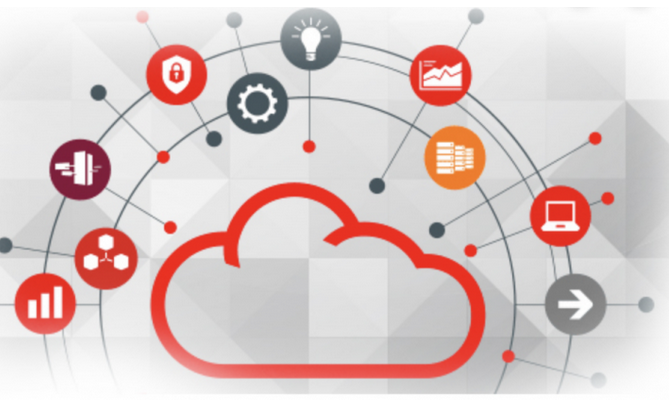
Oracle and Microsoft Accelerate Enterprise Cloud Adoption
Oracle and VMware have announced their collaboration to help VMWare customers run their deployments on Oracle’s cloud without rearchitecting applications or operations. With Oracle, you’re in control.
Oracle and VMware help customers move to the cloud
Migration of VMware deployments to other cloud environments requires rearchitecture and modification of tools and processes because other clouds manage a fixed VMware environment controlled by the provider. With Oracle Cloud VMware Solution, enterprise systems integrators and managed service providers can extend or migrate their VMware operations to bare metal server clusters while maintaining full control of the environment.
This partnership presents the opportunity for enterprises to easily move applications to the cloud that were previously confined to on-premise environments. Now, enterprises can leverage the security, performance, and on-demand, pay-as-you-go model of Oracle Cloud Infrastructure to extend existing on-premise VMware infrastructure and investments without rearchitecting applications or retooling operations.
Oracle is the only hyper-scale cloud offering that empowers enterprises to migrate VMware vSphere environments to the cloud while retaining total control over updates, patches, and validation for all VMware components. Our joint customers can leverage the following benefits:
- Cloud flexibility: Extend your VMware deployment to a hybrid cloud environment spanning your datacenter and Oracle Cloud, or migrate VMs at your own pace to reduce your own infrastructure
- Control over your environment: Run the versions of VMware software you want, with full administrative access to the entire stack of VMware components running on bare metal cloud compute instances that you fully control. Maintain your tested and proven on-premise deployment architectures and processes.
- Control over your schedule: Update and patch on your own schedule. Fully test environment upgrades and deploy them at your own pace.
- Global reach: Leverage Oracle’s rapidly expanding global footprint to scale worldwide without establishing your own data centers.
For more informations about this capability refer to the following LINK
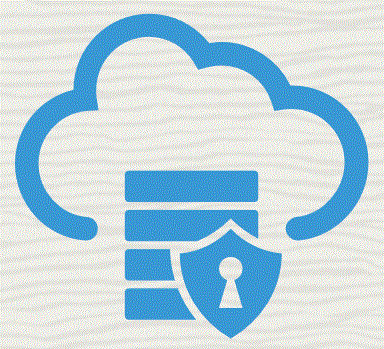
Oracle Data Safe: Secure your data
Oracle Data Safe is a fully-integrated Cloud service focused on the security of your data. It provides a complete and integrated set of features for protecting sensitive and regulated data in Oracle Cloud databases. Features include Security Assessment, User Assessment, Data Discovery, Data Masking, and Activity Auditing.
Oracle Data Safe provides the following set of features for protecting sensitive and regulated data in Oracle Cloud databases, all in a single, easy-to-use management console:
- Security Assessment helps you assess the security of your cloud database configurations. It analyzes database configurations, user accounts, and security controls, and then reports the findings with recommendations for remediation activities that follow best practices to reduce or mitigate risk.
- User Assessment helps you assess the security of your database users and identify high risk users. It reviews information about your users in the data dictionary on your target databases, and calculates a risk score for each user. For example, it evaluates the user types, how users are authenticated, the password policies assigned to each user, and how long it has been since each user has changed their password. It also provides a direct link to audit records related to each user. With this information, you can then deploy appropriate security controls and policies.
- Data Discovery helps you find sensitive data in your cloud databases. You tell Data Discovery what kind of sensitive data to search for, and it inspects the actual data in your database and its data dictionary, and then returns to you a list of sensitive columns. By default, Data Discovery can search for a wide variety of sensitive data pertaining to identification, biographic, IT, financial, healthcare, employment, and academic information.
- Data Masking provides a way for you to mask sensitive data so that the data is safe for non-production purposes. For example, organizations often need to create copies of their production data to support development and test activities. Simply copying the production data exposes sensitive data to new users. To avoid a security risk, you can use Data Masking to replace the sensitive data with realistic, but fictitious data.
- Activity Auditing lets you audit user activity on your databases so you can monitor database usage and be alerted of unusual database activities.
Learn more about Oracle Data Safe at the following LINK
Accelerate your business with Oracle Autonomous Database
Databases store critical business information and are essential for the efficient operation of modern organizations. DBAs are often overburdened with the time-consuming manual tasks of managing and maintaining databases. The demands of current workloads can lead to DBA errors, which can have a catastrophic impact on uptime, performance, and security.
For example, failing to apply a patch or security update can create vulnerabilities. Failing to apply the patch correctly can weaken or eliminate security protections altogether. If the database is not secure, the enterprise can be at risk for data breaches that can have serious financial repercussions and negatively impact a company’s reputation.
Business applications add new records to existing databases or use database information to create reports, analyze trends, or look for anomalies. This can cause databases to grow to many terabytes in size and become highly complex, making them even more difficult for DBAs to manage, secure, and tune for maximum performance. Databases that are slow-running or unavailable due to downtime can negatively impact employee productivity and frustrate customers.
The amount and velocity of data available to the enterprise is accelerating. This amplifies the need for efficient, secure database management that enhances data security, reduces downtime, improves performance, and is not vulnerable to human error. An autonomous database can achieve these objectives.
An Autonomous Database consists of two key elements that align with workload types.
- A data warehouse performs numerous functions related to business intelligence activities, and uses data that’s been prepared in advance for analysis. The data warehouse environment also manages all database lifecycle operations, can perform query scans on millions of rows, is scalable to business needs, and can be deployed in a matter of seconds.
- Transaction processing enables time-based transactional processes such as real-time analytics, personalization, and fraud detection. Transaction processing typically involves a very small number of records, is based on predefined operations, and allows for simple application development and deployment.
An Autonomous Database leverages AI and machine learning to provide full, end-to-end automation for provisioning, security, updates, availability, performance, change management, and error prevention.
In this respect, an autonomous database has specific characteristics.
- It is self-driving. All database and infrastructure management, monitoring, and tuning processes are automated. DBAs are still needed for tasks such as managing how applications connect to the a and helping developers use the in-database features and functions without their application code.
- It is self-securing Built-in capabilities protect against both external attacks and malicious internal users. This helps eliminate concerns about cyberattacks on unpatched or unencrypted databases.
- It is self-repairing. This can prevent downtime, including unplanned maintenance. An autonomous database can require fewer than 2.5 minutes of downtime per month, including patching.
For more informations about Oracle Autonomous Database use the following Link.
Oracle Autonomous Linux Highly secure. Highly reliable.
Oracle Autonomous Linux, along with the new Oracle OS Management Service, is the first and only autonomous operating environment that helps greatly reduce complexity and human error to deliver increased cost savings, security, and availability for Oracle Cloud Infrastructure customers, all while providing full compatibility with IBM Red Hat Enterprise Linux.
Oracle Autonomous Linux executes automatic patch updates and tuning—without human interaction—improving IT staff productivity, security, and downtime. Combined with native Oracle Cloud Infrastructure services such as Oracle OS Management Service, it offers even more automation such as autoscaling, lifecycle management across pools, and monitoring. It is available with Oracle Linux Premier Support at no cost to Oracle Cloud customers. Oracle Autonomous Linux is based on Oracle Linux, which is binary-compatible with Red Hat Enterprise Linux, allowing IBM Red Hat customers to immediately start using the service with current applications in Oracle Cloud Infrastructure.
Keeping operating systems patched and secure is one of the biggest operational challenges that IT organizations can face. With Oracle Autonomous Linux in Oracle Cloud Infrastructure, you can minimize availability and security risks from missed or incorrectly applied patches. With Oracle Ksplice enabled by default, you can reduce unnecessary downtime when applying kernel patches to your systems. When deployed with Oracle Cloud Infrastructure services such as Oracle OS Management Service, the automation and TCO benefits get even better with automatic provisioning, scaling, and tuning. Combined with Oracle Cloud Infrastructure’s other cost advantages, all of this means that most Oracle Linux workload customers can expect to have a 30 to 50 percent TCO savings over five years versus both on premise and other cloud vendors.
For more informations about Oracle Autonomous Linuxuse the following Link.
